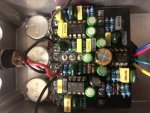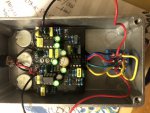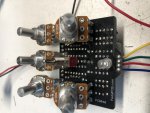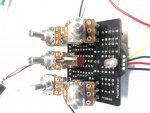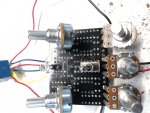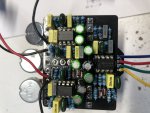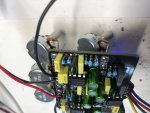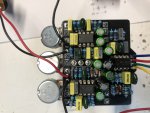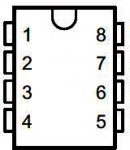Kroars
Well-known member
Hello All,
Just finished the Wrectifier pedal and am having difficulty with it. I’ve got a clean signal when in bypass. Although when I turn the effect on via foot switch, LED comes on but I can barely here the effect through amp and only when I turn both gain and volume (on pedal) all the way up. I’ve don’t the typical troubleshooting with grounding issues and shorts, can’t find anything.
Like I mentioned, if I turn volume and gain all the way I can faintly here the effect through my amp, I can even hear changes in tone when I mess with the tone knobs. When I turn my amp volume to noon, I can here the effect pretty good -but then if I turn effect off my clean is screaming loud.
what could cause this? All components (even resistors) individually tested for correct value during installation. I suppose I didn’t test the 3 IC’s, but they’re part of a lot I purchased and others from same lot worked great in other builds.
Thanks!!
Just finished the Wrectifier pedal and am having difficulty with it. I’ve got a clean signal when in bypass. Although when I turn the effect on via foot switch, LED comes on but I can barely here the effect through amp and only when I turn both gain and volume (on pedal) all the way up. I’ve don’t the typical troubleshooting with grounding issues and shorts, can’t find anything.
Like I mentioned, if I turn volume and gain all the way I can faintly here the effect through my amp, I can even hear changes in tone when I mess with the tone knobs. When I turn my amp volume to noon, I can here the effect pretty good -but then if I turn effect off my clean is screaming loud.
what could cause this? All components (even resistors) individually tested for correct value during installation. I suppose I didn’t test the 3 IC’s, but they’re part of a lot I purchased and others from same lot worked great in other builds.
Thanks!!



